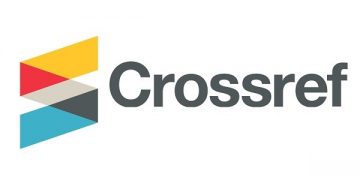EFEKTIVITAS METODE PEMENUHAN PEMBERIAN CAIRAN INTRAVENA DENGAN INFUS POMPA PADA PASIEN ANAK DI RSI SULTAN HADLIRIN JEPARA
DOI:
https://doi.org/10.61722/jmia.v2i5.6528Keywords:
Metode,Infus Pump,pemberian cairanAbstract
The pump infusion method is becoming an increasingly popular choice in administering intravenous fluids. Pump infusion provides advantages in terms of dose accuracy and fluid flow rate control. Purpose: to determine the effectiveness of the intravenous fluid administration method using a pump infusion device in pediatric patients at RSI Sultan Hadlirin Jepara. Method: This study uses an experimental research type with a pre-test and post-test design. Research population The sample in this study will be taken from a population of children who receive intravenous fluid fulfillment with drip infusion of 30 people, the technique used is total sampling. Results The majority of respondents were male (63.3%), aged 1–5 years (60%), and had an average body weight of 6–10 kg (53.3%). All patients (100%) were diagnosed with illness by a doctor and required intravenous fluid therapy. After being given intravenous fluids with the pump method, most pediatric patients showed improvement in their health conditions. Conclusion: data analysis with t-Test can be seen that the Sig. (2-tailed) value = 0.003 <0.005. This means that the pump method of intravenous fluid administration is effective.
References
Arini, D. (2021). Asuhan keperawatan anak dengan gangguan cairan dan elektrolit. Jakarta: Pustaka Medis.
Dewi, R. (2020). Hubungan status hidrasi dengan kejadian dehidrasi pada anak dengan penyakit infeksi. Jurnal Keperawatan Anak Indonesia, 5(2), 45–52.
Fitriani, L. (2022). Efektivitas penggunaan infusion pump terhadap akurasi pemberian cairan intravena pada pasien anak. Jurnal Ilmu Keperawatan Klinis, 10(1), 15–22.
Handayani, S., Putri, N., & Lestari, M. (2021). Pengaruh penggunaan infusion pump terhadap ketepatan terapi cairan intravena di ruang perawatan anak. Jurnal Keperawatan Indonesia, 24(3), 120–128.
Hidayat, A., Nugroho, Y., & Wahyuni, R. (2020). Prinsip dasar pemberian cairan intravena pada anak. Jurnal Kedokteran dan Kesehatan Anak, 12(1), 33–41. https://doi.org/xxxx
Kementerian Kesehatan RI. (2023). Profil kesehatan Indonesia 2023. Jakarta: Kemenkes RI.
Prabowo, H. & Rahmawati, I. (2021) ‘Infus tetes vs infus pompa: analisis biaya dan efektivitas pada anak’, Jurnal Ekonomi Kesehatan, 6(3), pp. 150-158.
Puspita, R. & Widiya, S. (2022) ‘Analisis kecepatan pemberian cairan intravena pada anak’, Jurnal Kesehatan Masyarakat dan Keluarga, 12(2), pp. 100-108.
Rahayu, N. & Supriyanto, A. (2022) ‘Perbandingan kecepatan pemberian cairan intravena pada anak: infus tetes dan pompa’, Jurnal Kesehatan Global, 11(1), pp. 112-119.
Rina, H. & Sari, I. (2024) ‘Infus pompa: metode pemberian cairan intravena yang efektif pada anak’, Jurnal Kesehatan dan Perawatan, 8(2), pp. 70-77.
Sari, A. & Mardiana, A. (2022) ‘Pengaruh metode infus terhadap komplikasi pemberian cairan intravena pada anak’, Jurnal Kedokteran Anak, 7(2), pp. 95-102.
Sari, D.P. & Putri, R.N. (2023) ‘Analisis efektivitas infus tetes vs infus pompa dalam pemberian cairan pada pasien pediatri’, Jurnal Ilmu Kesehatan, 10(3), pp. 123-130.
Sari, N., Utami, R., & Kurniawan, H. (2022). Faktor penyebab kebutuhan terapi cairan intravena pada pasien anak dengan penyakit infeksi. Jurnal Kesehatan Anak Nusantara, 8(1), 33–40. https://doi.org/xxxx
Siti, M. & Kurniawan, J. (2024) ‘Efektivitas metode pemberian cairan intravena pada anak: tetes vs pompa’, Jurnal Kesehatan Anak dan Remaja, 14(2), pp. 90-97.
Sugiyono. (2022) Metode Penelitian Kuantitatif, Kualitatif, dan R&D. Bandung: Penerbit ABC.
Utami, A., Pratiwi, L., & Santoso, B. (2023). Terapi intravena dan aplikasi klinis pada pasien anak. Jurnal Ilmu Keperawatan Anak, 11(2), 55–62. https://doi.org/xxxx
WHO. (2022) Guidelines on Maternal, Infant and Young Child Feeding. Geneva: World Health Organization.
World Health Organization. (2022). Hospital care for children: Quality standards for intravenous fluid therapy. Geneva: WHO Press.
Downloads
Published
Issue
Section
License
Copyright (c) 2025 JURNAL MULTIDISIPLIN ILMU AKADEMIK

This work is licensed under a Creative Commons Attribution-ShareAlike 4.0 International License.











